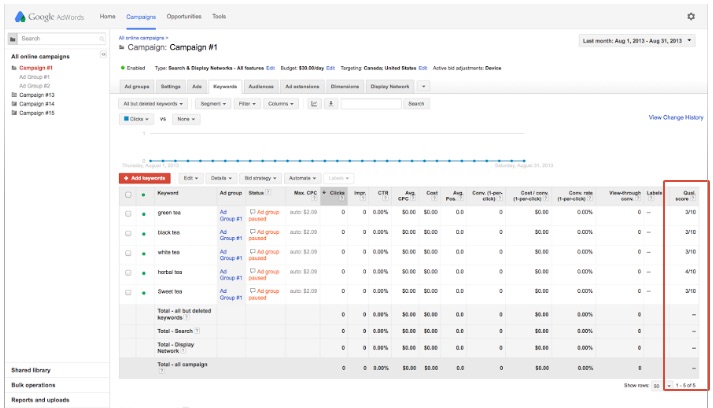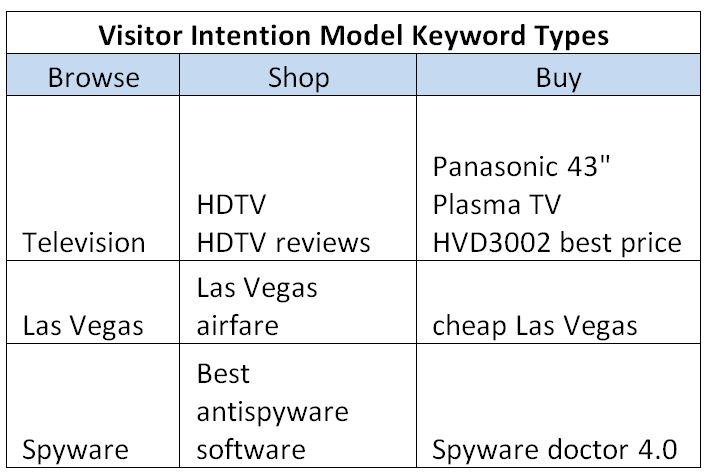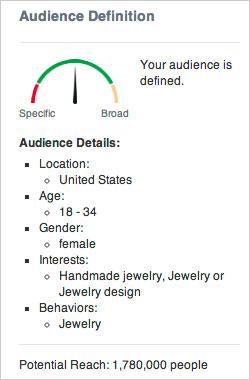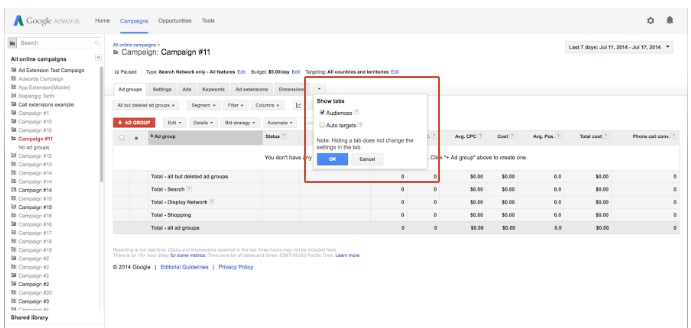Some of the most successful marketers involved in pay-per-click or paid search have earned their badges. Why? Because not only do they sport serious creativity, but they're also hands-on and analytical to a fault.
Most importantly, they have zero fear when it comes to trying new things with their advertising.
There's always a price to pay with experimentation, but it's only through trying new things that I've been able to grow my PPC campaigns. If I delay when new AdWords features are rolled out or new opportunities present themselves, my competitors will reap the benefits instead of me.
If you've already got your feet in the shallow end of PPC, here's how to grow those already-performing campaigns to improve your return.
Signs That It's Time to Grow
Early on, you'll spend a lot of time optimizing your campaigns to improve your performance. This includes:
- Creating and testing ad variations
- Tweaking copy and keywords
- Optimizing landing pages
- Adjusting audience targets
- Endless A/B testing
You'll eventually hit a point where the few ads you're running are getting results, and you'll have clear indicators that it's time to put more into your campaigns:
1. Click-through rates are peaking
WordStream collected new data recently from a sample of 2,367 clients who utilized Google Adwords' Search and Display networks in 2015.

The data shows average click-through rates segmented by industry, and shows variances from 1.35% to 3.4%. Based on that data, the average click-through rate in AdWords across all measured industries was 1.91%.
If you're in that zone – or even higher – it's a good sign that your ads are performing well and it's time to expand what you're doing with PPC.
A higher click-through rate usually equates to a higher quality score, and the higher the quality score, the less you're paying per click. If you're saving money, you need to put that money back into your campaigns.
2. Quality scores have improved
Your quality score is essentially a 1-10 metric on how much Google likes the ad that you've created. It directly impacts your cost-per-click as well as your impression share (how often Google is displaying your ads).

If you've managed to increase your quality score well above 5 (as close to 10 as possible), you've likely spent time on improving keyword relevancy, ad copy, and your landing pages. It's not an easy metric to improve, so if you've managed to keep your score up, then it's time to replicate what you've done and grow your campaigns.
3. Spending is reduced and conversions are up
There are a lot of marketers and brands that funnel money into PPC without seeing the return on conversions. Those who aren't seeing results or think it doesn't work are likely making one of several mistakes:
- They're not leveraging both the search and display networks effectively (or just limiting their campaign to a single channel)
- They're not targeting effectively; they're going after the wrong audience segments or targeting broad search terms without using negative terms
- They're pushing ads at the wrong times/days
- The relevance between the ads and landing pages is shot – like sending ad traffic to home pages
- The ads are garbage
Or, they're just not tracking conversions effectively.
If your metrics show all the right signs that you've been able to keep spending under control, your CTR is up, and conversions look good, then double down on your efforts.
This is where you need to be careful, though. Just because you brought one or a couple of campaigns to a profitable point doesn't mean you will instantly see success with every new campaign you launch. It's possible to completely tank your ROI if you're not careful.
How to Grow Your PPC Campaigns After The First Successful Campaigns
There are two ways you can grow your PPC efforts once you start seeing positive ROI from your existing campaigns:
- Improve your existing campaigns
- Roll out new ad campaigns
If you're already getting average or slightly above average performance from the campaigns you're running, who says you have to reinvent the wheel? I always use this opportunity to do better with what I already have and improve ads that have already proven their effectiveness.
Improve Performance with Ad Position Targeting
Google likes to tamper with ad placement on the search network. Once upon a time, we had ads at the top, right, and bottom of organic search results in abundance. Recently, Google made a change that dropped ad displays on the right side of desktop search results and limited ads to the top or bottom of the SERPs.
That still gives you plenty of opportunity to strategically improve the placement of your ads.
You might assume that getting your ad at the top of the stack is ideal, but this isn't always the case. In an article for Search Engine Land, Amanda West-Bookwalter, account manager for Hanapin Marketing, shared an analysis of their PPC ad placement.
Using pivot tables, she reviewed their ad placement by revenue and impressions.

She says:
“This is an example from one of our accounts. You can see that the highest RPM [revenue per one thousand impressions] actually comes from the 3.6+ positions. While it can be difficult to garner impression volume at those positions, I can see from this data that targeting these positions will be the most profitable in terms of ROI. This is valuable to have, because now I can take keywords that aren't reaching ROI goals at higher positions and lower them drastically instead of pausing or deleting them.”
The top positions in the image above show significant revenue, but this is proof that other positions can have a substantial impact. Their ads with an average position of 3.6 are seeing significant revenue with a fraction of the impressions.
Experiment with trying to shift the placement of your ads to examine how they perform.
Get Hyper-Specific With Your Audience
If you're working with search and display ads in Google, you can target broader top-level keywords and long-tail keywords.
Those long-tail keywords are more specific terms that target a very specific segment of your audience. A study from Statista shows that successful optimization requires that a large portion of your focus – at least 50% – be on long-tail keywords.
Customers who use more descriptive phrases, or long-tail search phrases, are typically more likely to convert than those who use more general terms.

Neil Patel shared the above example in a deep-dive post on generating long-tail search terms (which I highly recommend as a “read and bookmark” post).
Improving your existing ads with more long-tail terms can reduce impressions since you'll reach a smaller audience, but you'll typically see a spike in conversions and CTR, and a reduction in cost-per-click.
You can achieve something similar if you're using Facebook's Ad Platform.
With long-tail keywords, it's all about audience targeting. On Facebook, you have a lot more control over the audience that sees your content. Rather than targeting by keywords, you should work on improving your custom audience through layers.
Go deeper than demographics and geographics. Start targeting specific behaviors, purchasing habits, employment type, and interests. By layering all of those on top of one another based on your buyer personas, you'll shrink your audience but dramatically improve conversions for your ads when they're shown.

Add Remarketing to Your PPC Strategy
Rather than continually launching new search ads and pushing to create new audiences and ads on Facebook, I've saved a lot of time and ad dollars with remarketing.
Not only is remarketing often cheaper than standard PPC, but you're also targeting people who have already engaged with you. They're aware of you and your offer, so you're much more likely to win the click.

Remarketing lists for search ads (RLSA) is an Adwords feature that lets you customize ads for people who have previously visited you. From there, you can tailor your bids and ads to those people when they do searches.
RLSA campaigns can generate twice the click-through rate, with up to 50% lower cost-per-clicks.
You can achieve the same with the Facebook Ad platform by installing a tracking pixel on your website. The pixel gathers data on visitor behavior, allowing you to generate highly-targeted Facebook ads based on those behaviors.
For example, I like to create Facebook ads that only target people who visited a specific offer or product page on my site, but didn't complete the process. With that in mind, you could create an ad for people who completed an opt-in, reinforcing the need for them to move to the next stage of the funnel using your advertising.
Conclusion
The answer to growing your PPC campaigns isn't to continually roll out new ads targeting different keywords in hopes of grabbing all the traffic. That only leads to a mountain of cluttered ad groups and campaigns that become difficult to track.
Instead, I always recommend finding ways to continue to improve your already well-performing ads while leveraging PPC campaigns to stay in front of people who have engaged with your brand – but have yet to pull the trigger.
How do you grow your PPC campaigns once you start to see performance improvements? Share your tips with me in the comments below.
About the Author: Aaron Agius is an experienced search, content and social marketer. He has worked with some of the world's largest and most recognized brands to build their online presence. See more from Aaron at Louder Online, their Blog, Facebook, Twitter, Google+ and LinkedIn.
Walang komento:
Mag-post ng isang Komento